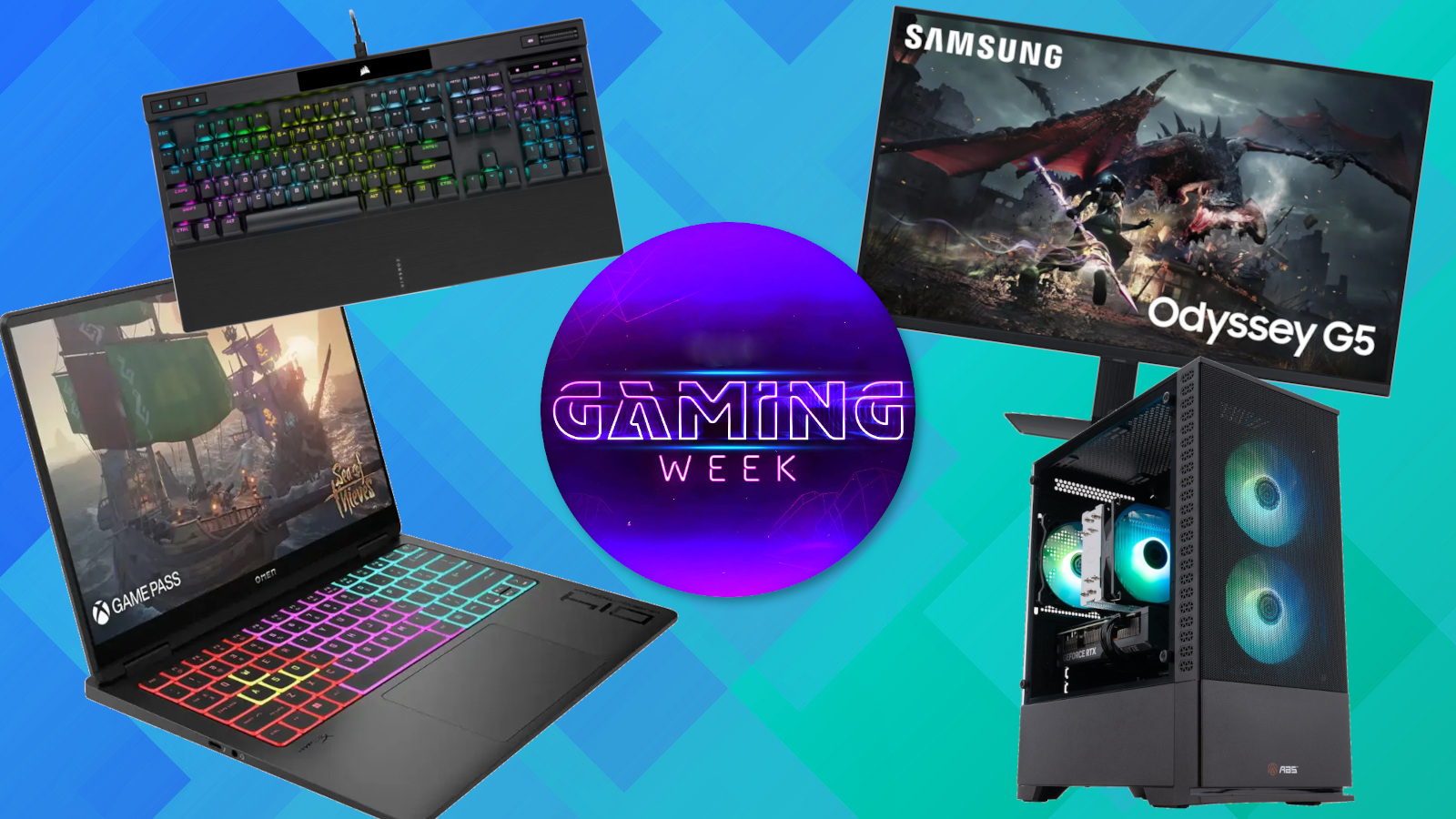Rainbow Six: Siege review: an exceptional FPS held back by its flaws
After a long string of complications, Tom Clancy's Rainbow Six: Siege has finally hit store shelves, bringing the tactical shooter franchise into the modern age.

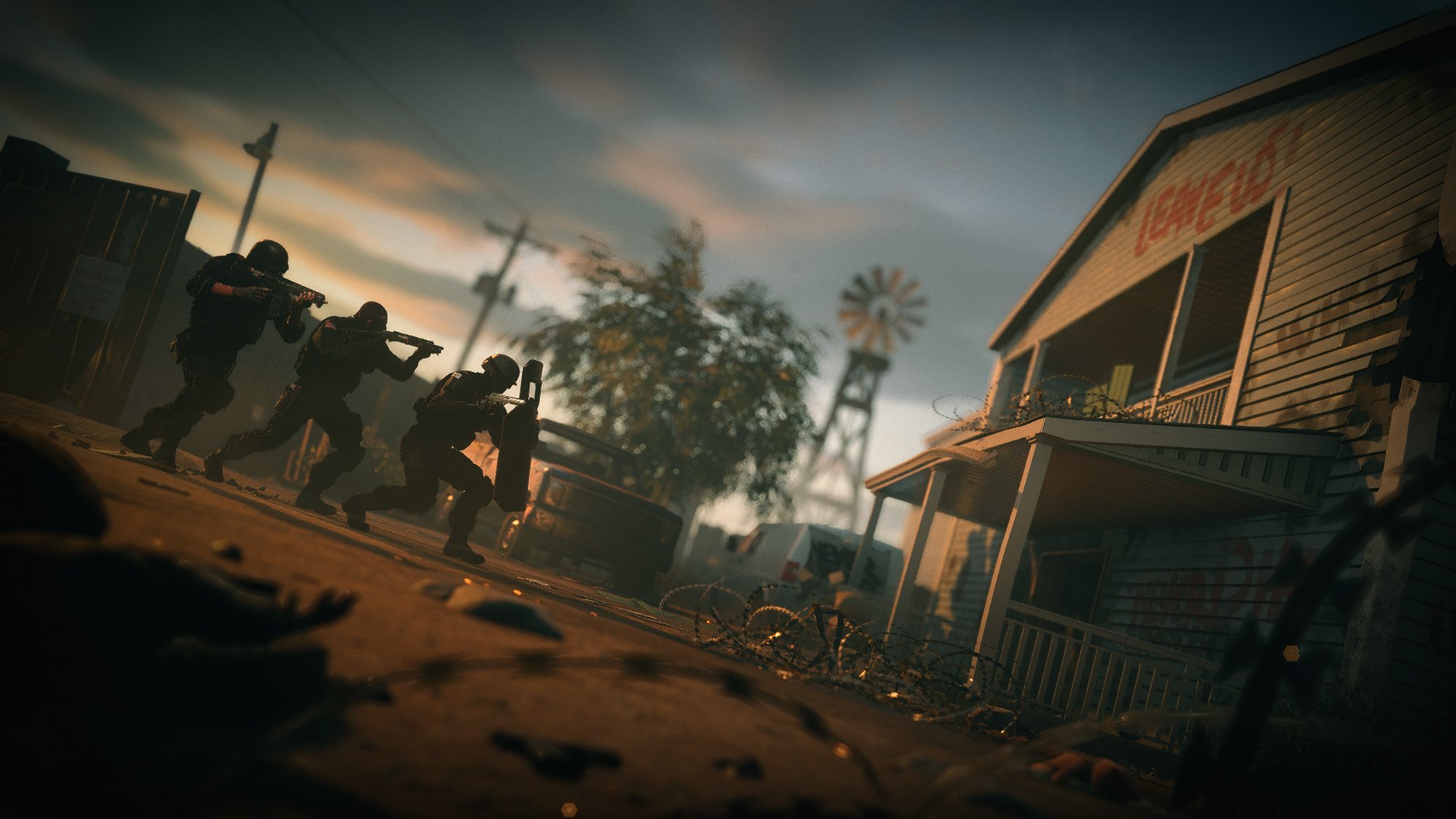
The title has risen from remnants of Rainbow Six: Patriots; a previously-canceled project in the series that explored similar themes, but never came to fruition. Rainbow Six: Siege marks Ubisoft's first attempt at a Rainbow Six title since Tom Clancy's passing, but despite this, the studio has promised to keep the legendary author's name on its properties.
Following in the footsteps of its fabled predecessor, Rainbow Six: Vegas, the game compiles staple features that have come to be expected from a Rainbow Six title. Mainly influenced by the classics, Ubisoft Montreal has tailored the series for the current generation, blending its iconic tactical gameplay with a competitive multiplayer experience.
Disclosure: This review was conducted on Xbox One using a retail copy purchased by the writer.
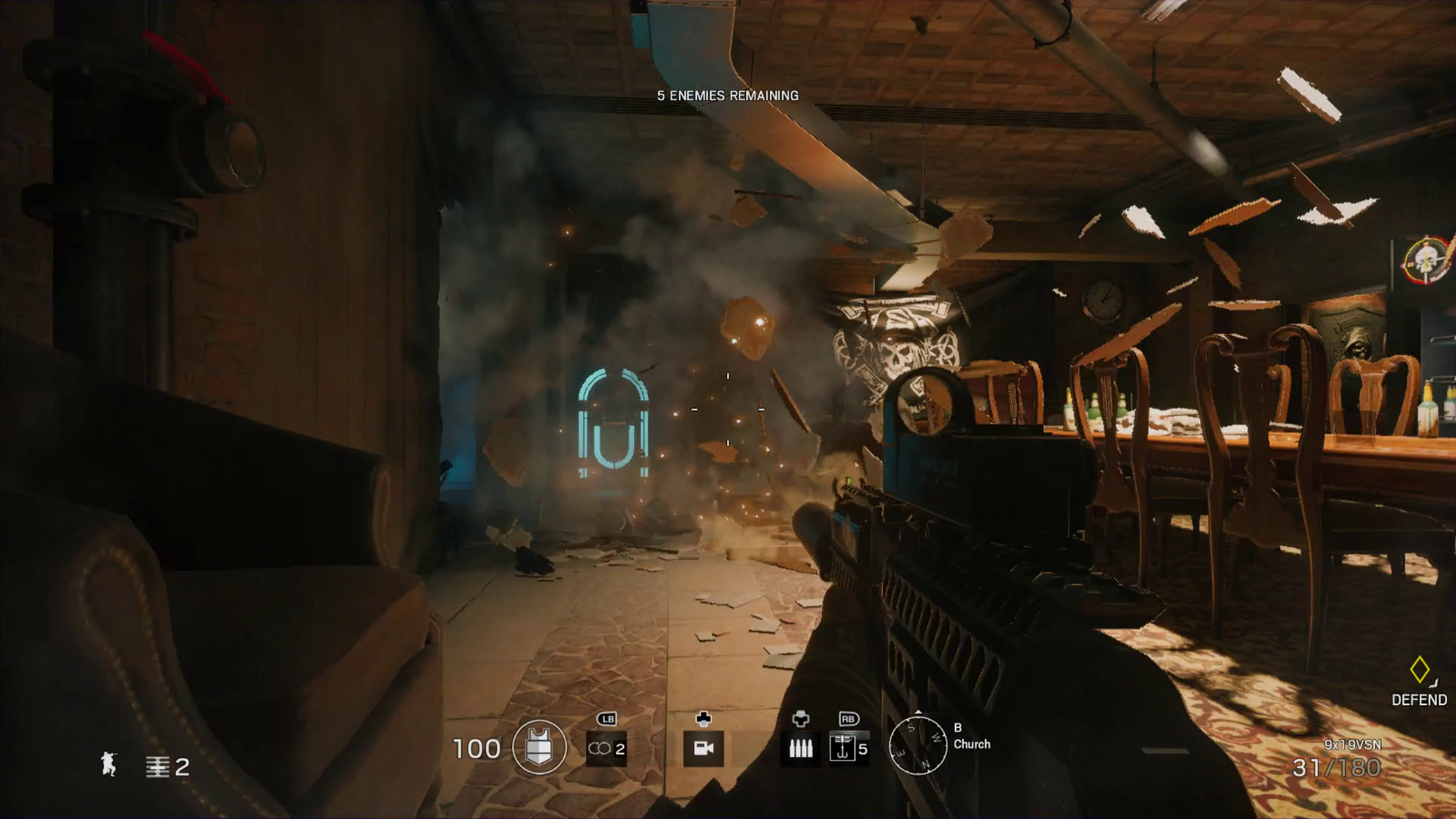
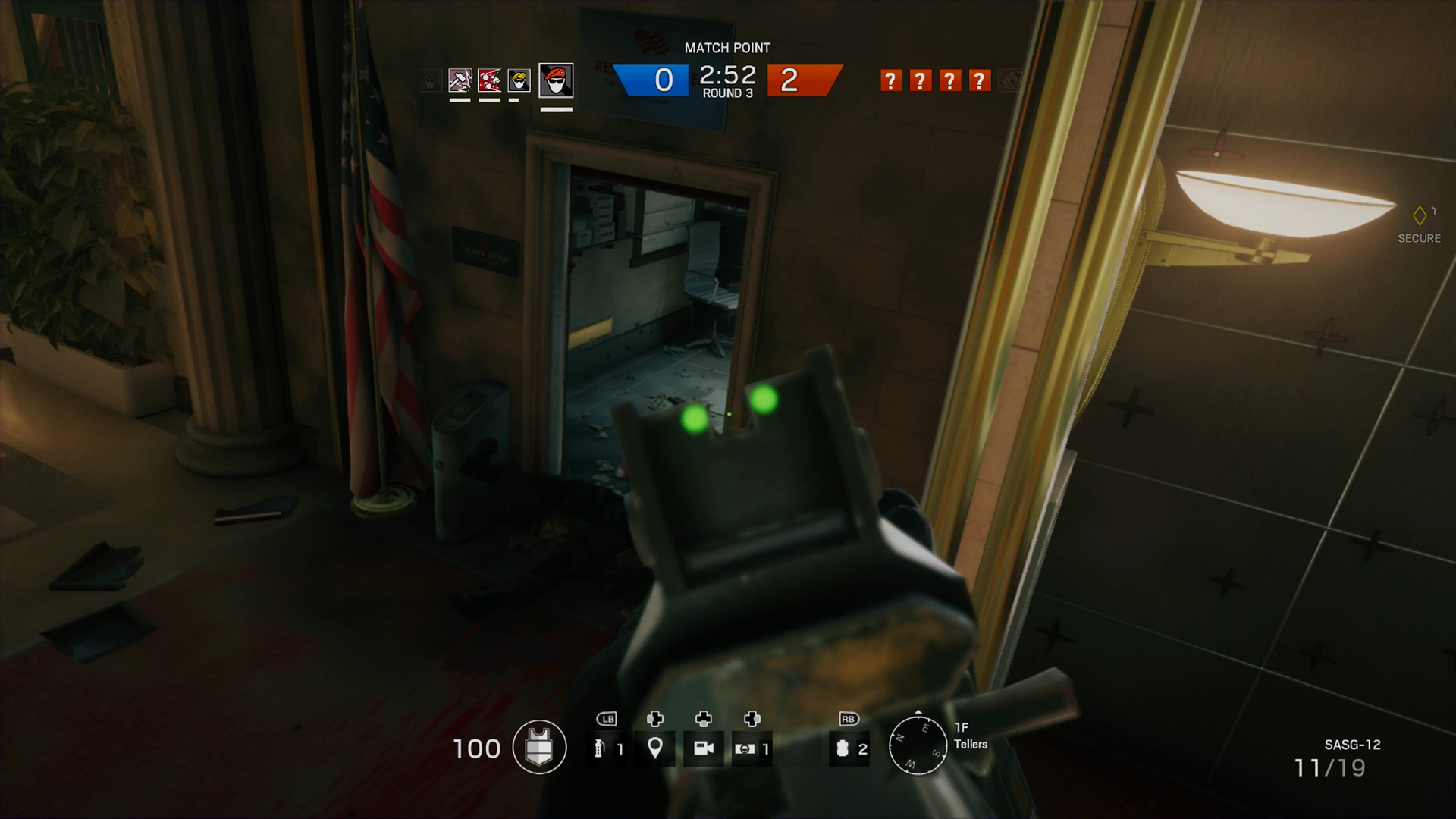
Gameplay
Three main modes are currently available in Rainbow Six Siege, each offering a variation on the game's universal formula. Influences from previous titles are most evident here, taking game modes such as the iconic 'Terrorist Hunt' mode from Rainbow Six: Vegas and re-introducing them with reworked mechanics. Terrorist Hunt is Rainbow Six: Siege's solution for a cooperative mode and blends PvE combat with online team play. In this mode, players are tasked with completing various objectives, while terrorist forces attempt to repel the siege. Terrorist Hunt doesn't hugely diverge from its roots, but delivers a fun, yet challenging experience when playing alone or with friends. On the basis that I've still yet to complete a level on the game's hardest difficulty, it's safe to say that it poses a significant test.
The meat of Rainbow Six Siege can be found in the game's multiplayer mode, which aims to be the first big-budget close-quarters tactical shooter on the current generation of consoles. While Counter-Strike: Global Offensive dominates the competitive shooter space on PC, Rainbow Six: Siege aims to emulate that success on the Xbox One. With that absence, Siege is one of the few tactical shooters available on the Xbox One.
Ubisoft has attempted to build upon the eSports scene where Counter-Strike flourishes, with distinct influences from its competitive game modes and progression. Rainbow Six: Siege has been developed to maintain the sharp learning curve that made Counter-Strike so compelling, with ranked playlists and levels tailored for competitive play. While the asymmetrical loadouts and level design do have the potential to hinder the game's popularity in the competitive scene, the game offers many features that would be embraced in eSports leagues.
The game ships with eleven maps out of the box but feels limited for a multiplayer-centric title.
Tacked onto these two modes is a single-player 'Scenarios' mode, which presents solo players with pre-prepared encounters that introduce a majority the game's mechanics and multiplayer levels. The mode is strongly recommended when first picking up the title; including veterans of the Rainbow Six franchise. As Rainbow Six: Siege does a lot to part itself from the stereotypical modern shooter, these tutorials are necessary to understand how each gadget and operator is used. The mode offers little regarding replayability but serves as a way to quickly learn the core mechanics of the multiplayer experience.
Get the Windows Central Newsletter
All the latest news, reviews, and guides for Windows and Xbox diehards.
Rainbow Six: Siege's level design plays a critical role in the game's atmosphere, with a majority of objectives being placed deep within buildings, surrounded by tight hallways and corners. The game ships with eleven maps out of the box, which feels limited for a multiplayer-centric title. Regardless of the number of maps, each level included on the disc is well designed and makes full use of Rainbow Six: Siege's unique mechanics. All the multiplayer maps are highly destructible, with most walls and floors being vulnerable to gunfire, explosives, and melee attacks. The game uses this to its advantage, with alternative routes and sight-lines that can be accessed by breaking down weaker geometry. Many rooms inside buildings may only have a limited number of entry points, but various vulnerabilities in walls, ceilings and floors can be exploited to get the drop on unsuspecting opponents.
Connectivity issues are one of the biggest problems I experienced, prevalent in a greater part of my personal play sessions. The game has improved since launch, but disconnecting from servers is still a frequent occurrence that plagues an otherwise great multiplayer experience. When the title first launched, making any connection to Ubisoft's servers seemed a challenge, but this issue appears to be largely resolved as of late. It wouldn't usually be such an issue, but when a large portion of the game is dependent on internet connectivity, it's hard to look past these concerns. Thankfully, Ubisoft is days away from shipping a patch to further improve upon the game's connectivity problems.
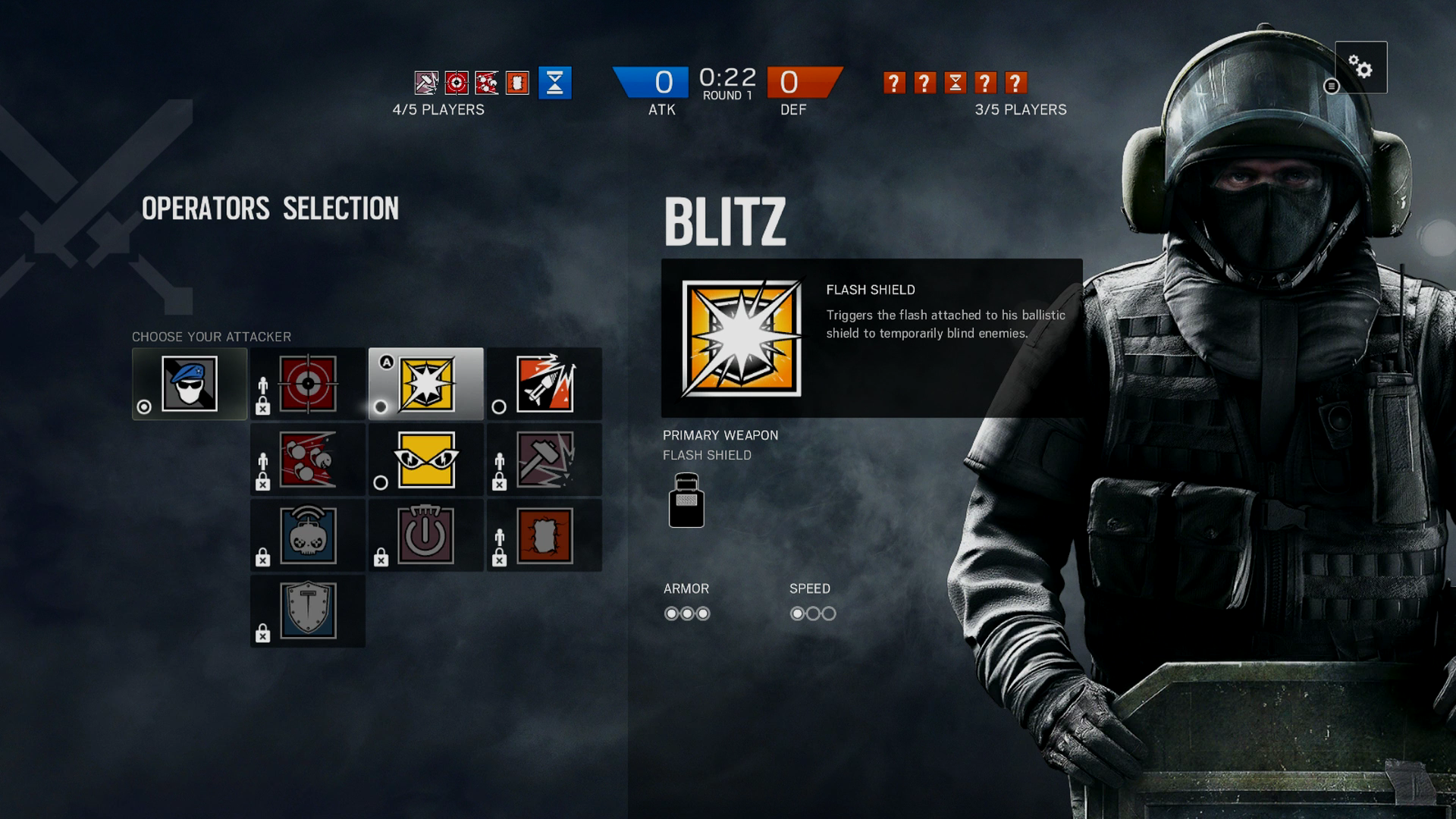
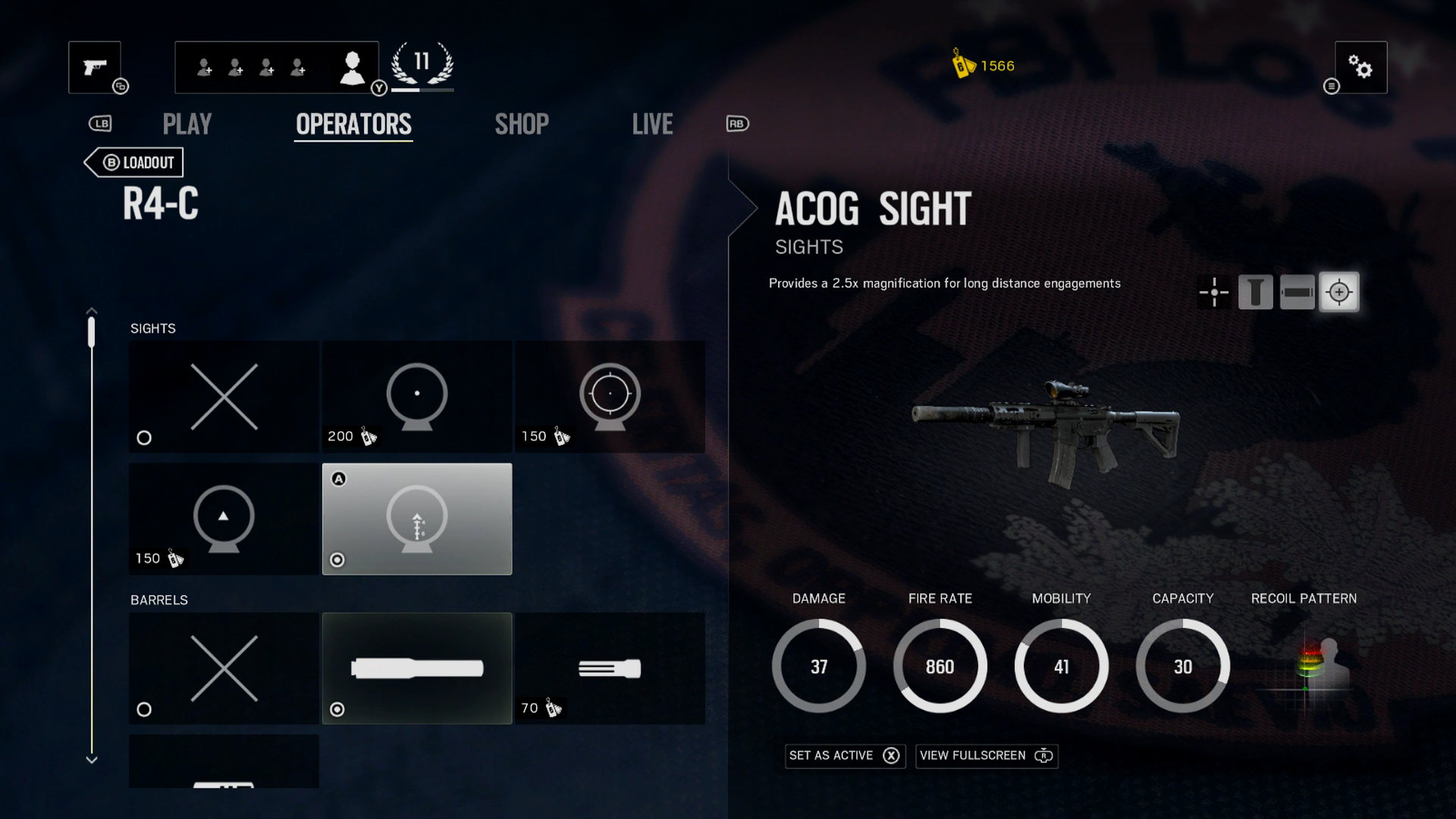
Loadouts and Customization
Rainbow Six: Siege's loadout system is handled via twenty different 'Operators', which act as classes to determine equipment and weapons. At the start of each game, players are assigned to either the attacking or defending teams and select an Operator to use over the course of the round. A selection of ten unique Operators is available per team, each with differing weapons and gadgets to aid the playstyle that the character encourages. Each Operator can only be selected once per round, which creates balanced teams with varying skillsets.
Operators can be equipped with a limited selection of weapons, with some armaments unique to a single character. The game features in-depth customization for all weapons, allowing the player to equip various sights, grips and barrel attachments to increase the performance of weapons. Guns can also be given a unique flair with vibrant paint jobs, inspired by Counter-Strike's iconic plethora of outlandish skins.
It should be noted that despite the large disposal of weapons and gadgets, the Operators feel perfectly balanced. While some setups will always have the upper hand in certain situations, never did I feel the equipment tendered a significant advantage. Over the coming months, new Operators will be making their way to Rainbow Six: Siege, but will have to slide smoothly into the existing roster to not harm the game's balance. These characters play a significant role in keeping the teams equal, making it crucial that this isn't changed by new additions.
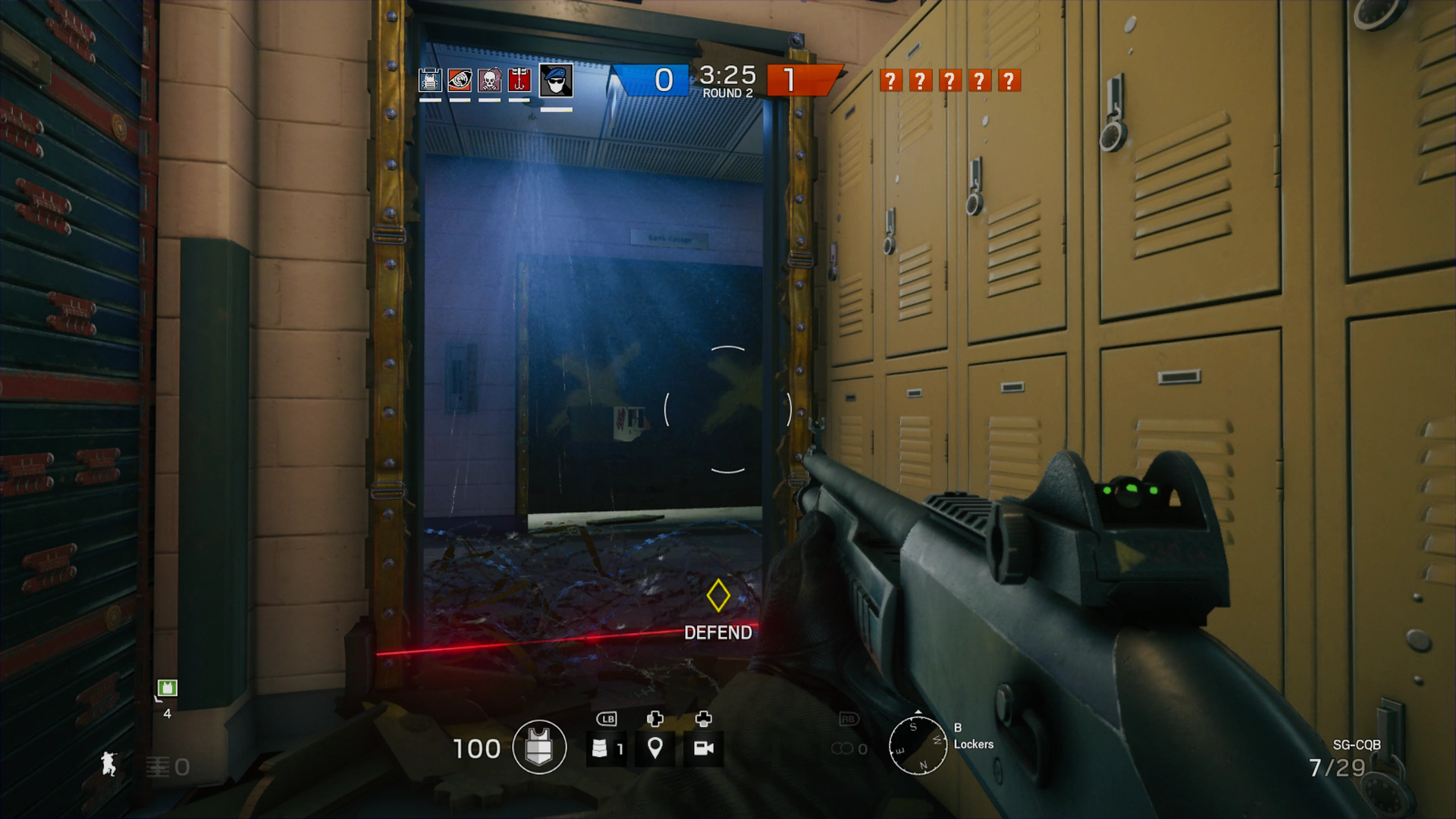
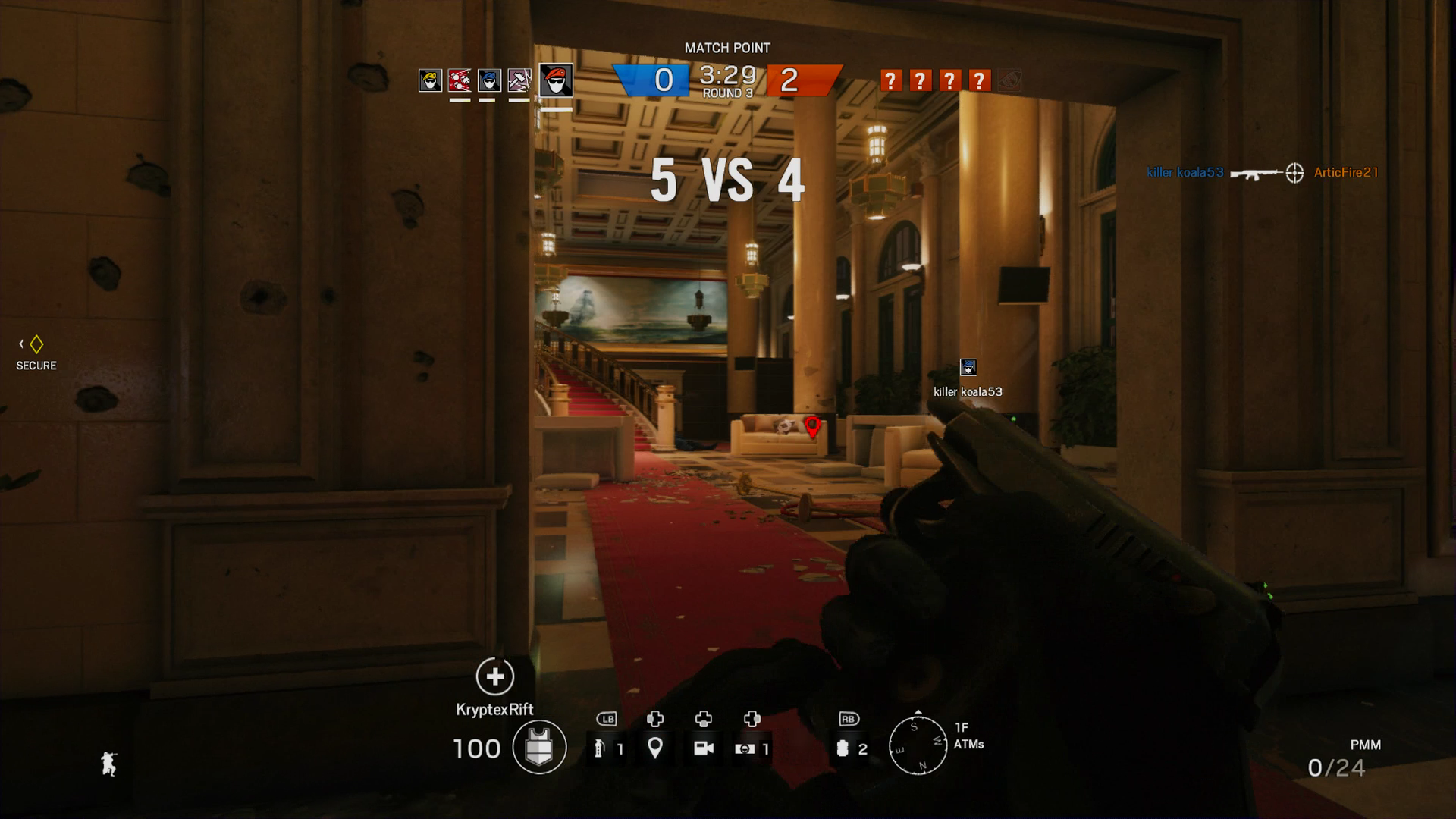
Atmosphere and Presentation
Due to a lack of a substantial single-player mode, Rainbow: Six Siege's surrounding fiction is far less developed in comparison to previous Rainbow Six games. A setup of the game's premise is presented via an introductory cutscene that tells of the current terrorist threat and plans to combat it. The fiction covered here is only loosely referenced in gameplay, and far from memorable.
Rainbow Six: Siege's atmosphere is perfectly executed and potentially the strongest part of the package.
Rainbow Six: Siege's greatest strengths can be found in the title's atmosphere and design, rather than the gameplay itself. The warzone of Rainbow Six: Siege is a punishing environment, regarding gameplay and atmosphere. The game tests your abilities to operate in tense situations and uses fear as a method of slowing the pace before an encounter. Being on constant alert is pivotal here, by listening out for sound cues and visual hints that could suggest danger is close by. When loud noises or explosions are triggered, the game's pace often increases, as players quickly converge upon the objective amidst the chaos. Ubisoft has attempted to capture the tension of a real battlefield, raising the stakes above what is often seen in modern shooters. In the game's flagship modes, players are unable to respawn or regenerate health, forcing a reserved playstyle. Player lives in Rainbow: Six Siege are a valuable asset, which is increasingly rare to see in any genre of video game.
The game doesn't shy away from brutal combat either, with heavy and responsive weapons, excessive blood splatters and natural ragdoll physics. Over my time in the game, I often found remnants of gunfights, where blood-drenched hallways were littered with various traps and gadgets. Rainbow Six: Siege is one of the few games I have seen that uses atmospheric tension to change the pacing of multiplayer gameplay, and successfully convey an acrid environment. If anything, Rainbow Six: Siege's atmosphere is perfectly executed and potentially the strongest part of the package.
Gunplay in Rainbow: Six Siege is less dependent on being a sharpshooter and can be often won through the use of strategic positioning. The lean mechanic, utilized by clicking the two sticks when aiming down sights, enables the player to peak around corners and take shots at the enemy. This feature makes gunfights in Rainbow Six Siege feel unique in opposition to the recent trends of rapid movement and short time-to-kill.
The game rewards players who plan their attacks; and while patience is key, knowing when to be aggressive can make the difference in an encounter. This results in constant fluctuation in pace, where the player will be forced to consider their actions, rather than to embark on a mindless killing spree.
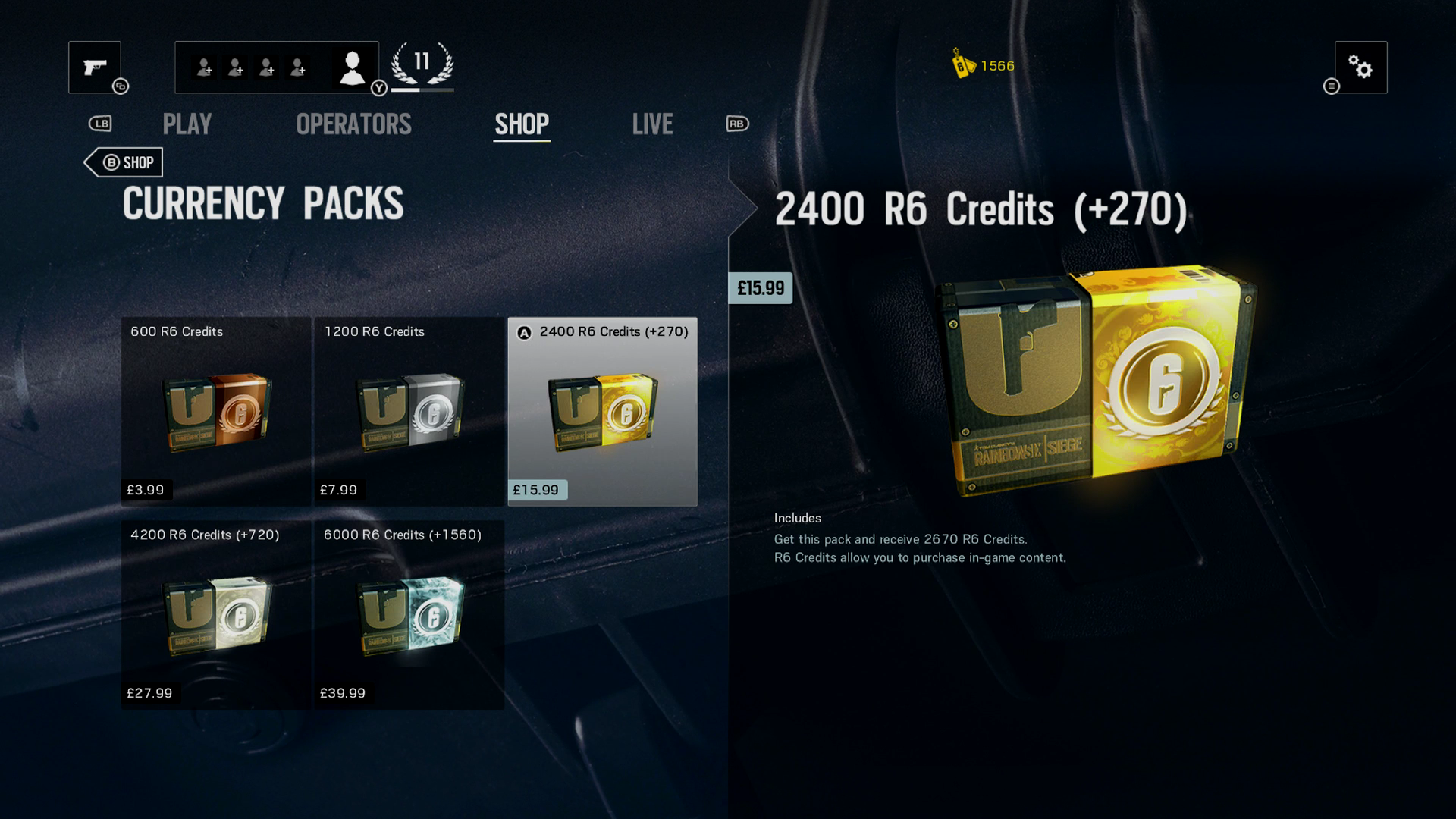
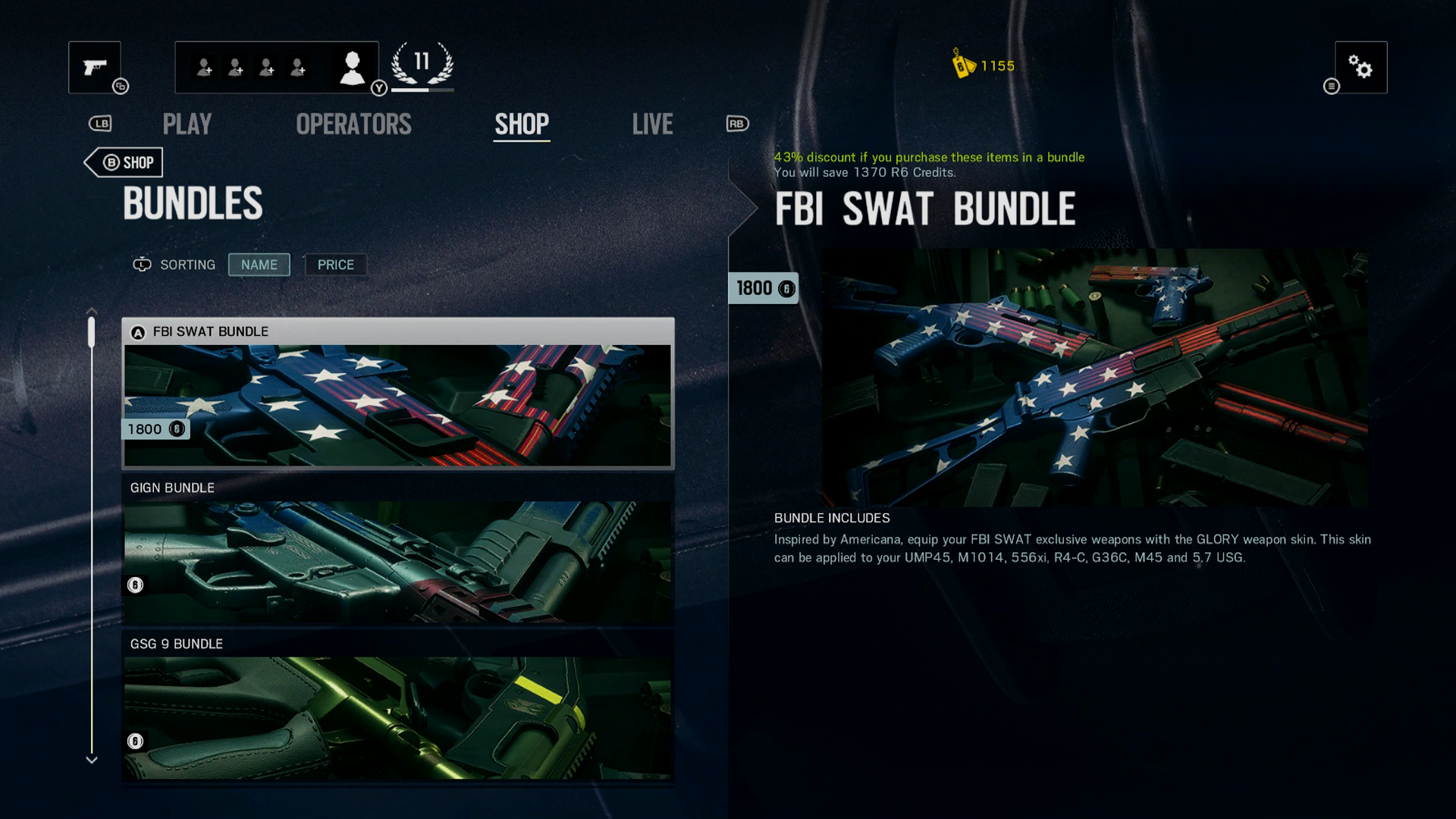
Value
While the core gameplay of Rainbow Six: Siege has been successfully executed as whole, multiple instances of in-game purchases hold back the title's potential. I personally found the use of micro-transactions to be far from obtrusive, but some players may feel hindered by their implementation. Two types of currency are currently used in Rainbow Six Siege. The first, being Renown, is earned for most tasks in the game. Completing matches and performing well in-game will grant higher Renown yields and can be used to purchase operators, attachments and weapon skins. R6 Credits, which are purchased from the Xbox Store, can be redeemed to obtain Renown boosters, equipment or weapon skin packs. On top of these microtransactions, a season pass is also available for purchase, which offers Renown boosts, new skins and early access to new operators.
All items that affect gameplay can be earned without passing over any real-world cash, but the game encourages additional purchases to progress at a faster rate. It appears Ubisoft isn't ashamed of this practice either, with the 'Shop' tab being displayed upon start-up, and numerous references to the marketplace throughout the game's menus. The promotion of these purchases walks a fine line, but some will find them nothing more than a hindrance to interface navigation. Conversely, the developer does promise to support the game into the near future with free maps and other content updates, to prevent a division in the population.
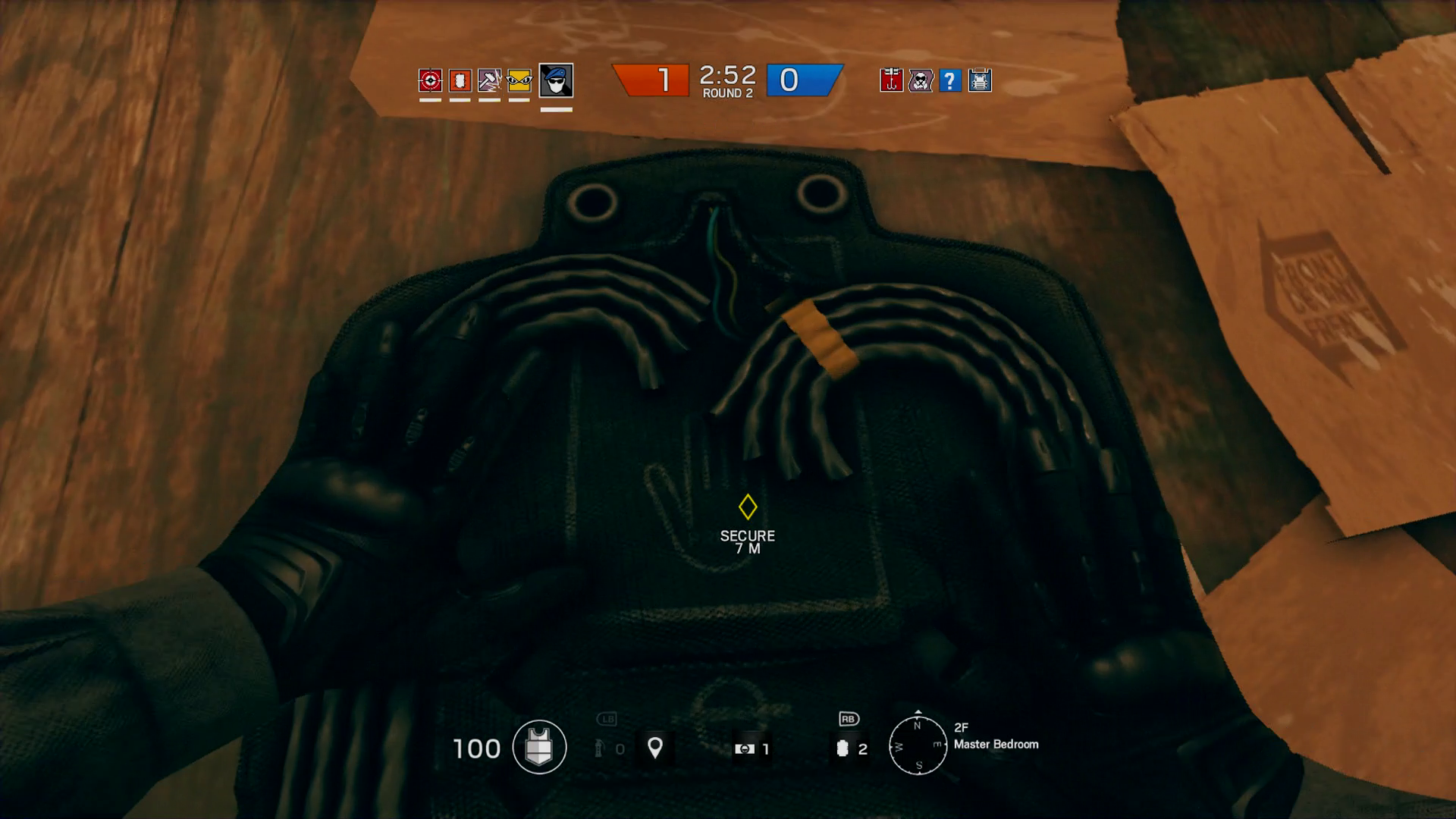
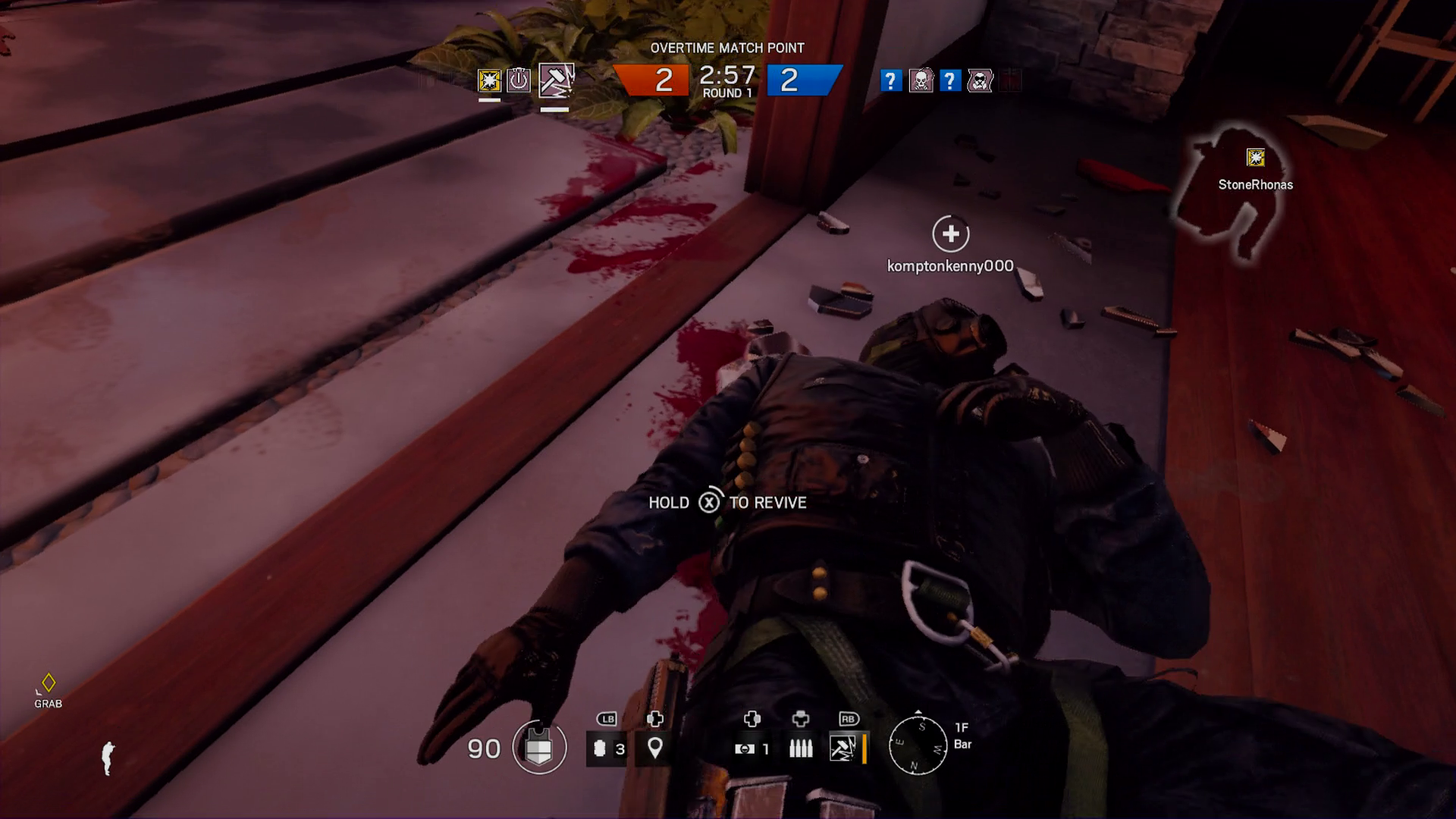
Conclusion
Rainbow Six: Siege is a great return to the franchise, and offers an experience that should satisfy the majority of fans of the series. The atmosphere and gameplay are almost perfect, but with such a limited number of experiences outside of the multiplayer, for me, certain areas of the title have started to feel hollow. Constant connectivity issues still riddle flagship game modes, resulting in numerous disconnects or extended periods of multiplayer matchmaking. In time, these problems should be resolved, but it currently feels that the extra polish the game deserves is absent.
Pros:
- Flawless portrayal of atmosphere
- Responsive weapon and gadget mechanics
- Delivers an experience similar to classic Rainbow Six titles
Cons:
- Frequent connectivity issues
- Lack of replayability
Aside from these minor gripes, Rainbow Six: Siege is one of my favorite first-person shooters in recent years, thanks to an exceptional execution of an ambitious concept. There are areas where the game could be expanded upon, but the core mechanics are enough to reap continuously hours of entertainment. With such a high asking price on digital marketplaces, a price drop may be what this game needs to succeed. Despite these grievances, Rainbow Six: Siege is a great return for the Rainbow Six franchise, which has left me eager for a successor.
Matt Brown was formerly a Windows Central's Senior Editor, Xbox & PC, at Future. Following over seven years of professional consumer technology and gaming coverage, he’s focused on the world of Microsoft's gaming efforts. You can follow him on Twitter @mattjbrown.

